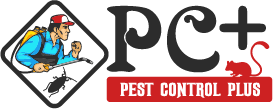Have you ever wondered why you see yellow jackets in ground when they are actually flying about all the time in search of food for their young ones and queen? Well, the answer is simple, most yellow jackets build their nest on the ground. They have a small opening through which they enter and exit their nest and hence are also known as ‘ground bees’. Though they do not pose a threat to humans unless and otherwise they nest in areas of high human activity, they are considered hazardous as some of them are scavengers that love to feed on leftovers of foods and sweets and when encountered can sting multiple times.
Ground Yellow Jackets – Bees or Wasps?
Pictures of Bees, wasps and yellow jackets

Ground yellow jackets that are also known as ground bees are not bees. They belong to the genus vespula thus making them wasps. Though they are part of the wasp family, most of them build underground nests made up of papery material which is chewed up wood. Yellow jackets unlike solitary wasps can sting, that too multiple times. They do not have a barbed sting like the honey bee and hence they are capable of injecting into your skin numerous times that too aggressively. Though they are considered as useful insects that help eliminate caterpillars and other agricultural pests, their aggressive nature makes them hazardous when they nest near humans – which happen more often than not.
Yellow Jackets in the Ground – Nesting and Lifecycle
Yellow jackets in the ground can be located easily when you thoroughly search your landscape for clues. If you find one or two yellow jackets around the house, follow them closely, you will see them disappearing suddenly in the ground. In the first days of spring, in the month of March, the yellow jacket queen builds the nest in abandoned underground burrows, rodent holes, under stumps or trees and old logs. The nest is made out of chewed up wood and is papery.
The nest contains numerous cells where the inseminated queen lays her eggs and feeds the hatched larvae. The larvae pupate and emerge as infertile female workers who take charge of protecting and feeding the brood from then on. The yellow jacket workers hunt for caterpillars, insects and other agricultural pests that they bring to their nest to feed the larvae and the queen.
Ground Nesting Yellow Jackets – Video
It is a You tube Video Uploaded by Jon Quint where he successfully captured the yellow jackets nest in the ground.
The nest building activities are also handled by the workers and the queen continues to lay eggs thereby expanding the nest and increasing the number of worker yellow jackets. A single queen’s colony can consist of as many as 5000 workers through a single season. The maximum size of the colony is attained by the months of August to September. During this period, since the food for larvae is scarce, yellow jacket workers scavenge for food and hence become pestiferous.
About this time, new queens and males are produced from the reproductive cells. Adult males, mate with the new queens and breathe their last. The new queens fly out of the nest and seek shelter in protected locations and wait out the winter to build their independent nests in the coming spring. The abandoned nests are left to decay and sometimes become homes for spiders and other insects to survive the winter.
 Yellow Jackets Pest Control Plus helps with control methods and in identifying right Products and Local pest control companies.
Yellow Jackets Pest Control Plus helps with control methods and in identifying right Products and Local pest control companies. 